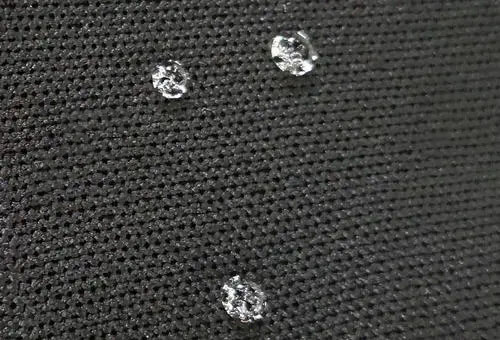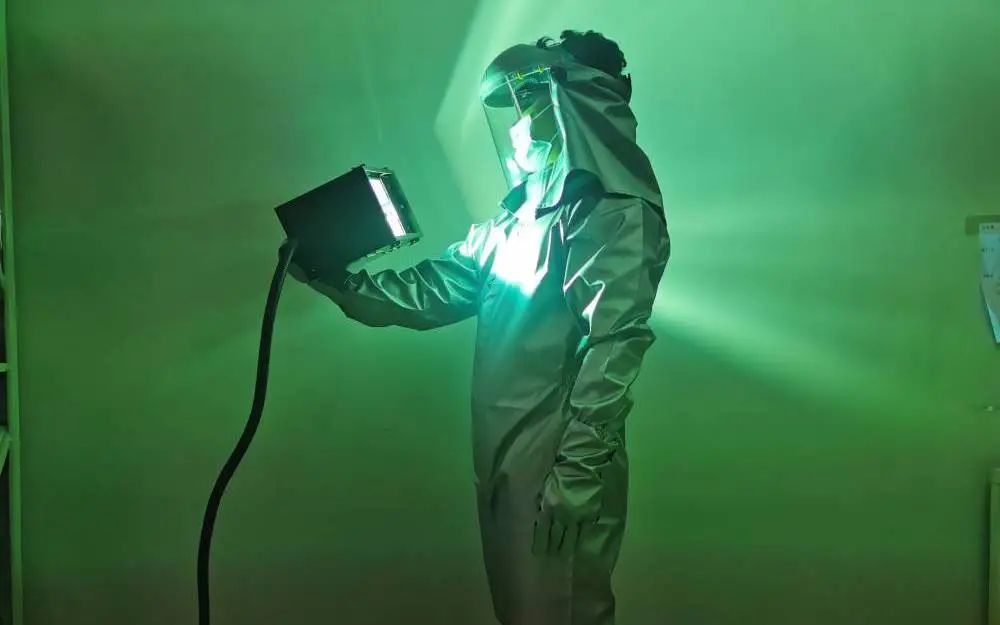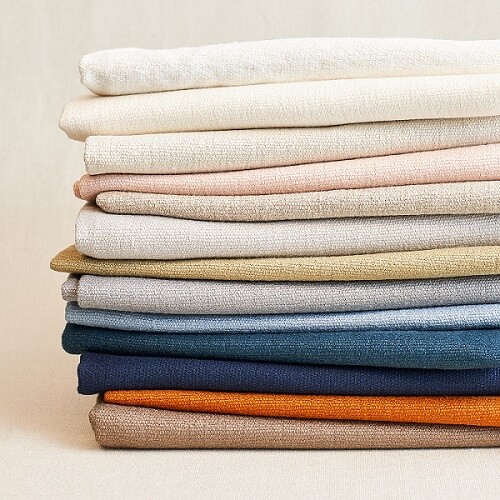Coated fabric: It is a kind of fabric treated by special technology. It can…
Hydrostatic Pressure Test Comparison: Resistance to Water Penetration of Textiles
Textile hydrostatic pressure refers to the resistance encountered when the water penetrates the fabric. Under standard atmospheric conditions, the fabric is subjected to a continuous rise in water pressure until water droplets seep out from the back of the fabric, at which point the measured water pressure size is the textile hydrostatic pressure. Common test standards are: ISO 811, AATCC 127, JIS L 1092.

Table of Contents
- Comparison of textile hydrostatic pressure test methods
- Hydrostatic pressure test standards: ISO 811, AATCC 127, JIS L 1092, GB/T 4744
- ISO 811: Textile fabrics – Water penetration resistance test method – Hydrostatic pressure test method
- AATCC 127: Water Resistance – Hydrostatic Pressure Test Method
- JIS L 1092: Test Methods for Water Penetration Properties of Textiles
- GB/T 4744: Testing and evaluation of textile water penetration properties – Hydrostatic pressure test method
- Hydrostatic pressure/head tester
- Common problems in the hydrostatic pressure test and handling method
Comparison of textile hydrostatic pressure test methods
In the textile industry, fabric hydrostatic pressure testing is widely used and has an important impact on functional textiles, and there are currently many different ways to test hydrostatic pressure.
Classification by test method
1 Field testing
Field testing is expensive and takes a long time, usually about six months. During the experimental period, the water resistance of the fabric is tested periodically after the waterproof and moisture permeable finishing, so that the durability can be known. Although this method is long and costly, the data obtained from the test is accurate.
2 Simulation Testing
The simulation test must have an environmental control room. The room is equipped with an artificial rain tower that can impact water at a flow rate of 450L/m2·h from a height of 10m towards the manikin, with droplets of approximately 5mm diameter ejected from the top 2000 holes at a speed of approximately 40km/h, reaching 90% of the maximum airborne raindrop speed. By adjustment, different levels of rainfall can be imitated over an area of about 2m2. The surface of the manikin is filled with sensors designed to determine the time and location of the final water penetration and other indicators. This means of testing takes much less time than field testing and can be completed in a few days, but is more expensive.
3 Laboratory testing
Compared with field testing and simulation testing, laboratory testing is less expensive, shorter, can get relatively accurate results, more practical, common test standards are ISO 811, AATCC 127, JIS L 1092.
Classification by the form of pressure
Dynamic method: increase the water pressure on one side of the fabric continuously until the other side of the fabric permeate a specified number of water droplets, measure the hydrostatic pressure that the fabric can withstand.
Static method: maintain certain water pressure on one side of the fabric, measuring the time required for water to penetrate from one side to the other side.
Classification by the size of the hydrostatic pressure value
Low pressure test method
Test methods include the following standards.
- International Standard ISO 1420 “Hydrostatic Pressure Test for Determination of Water Resistance of Rubber and Plastic Coated Fabrics”.
- Japanese Industrial Standard JIS L-1092 “Hydrostatic Pressure Test A for Water Resistance of Textiles”.
- American Association of Textile Chemists and Coloris test standard AATCC 127 “Hydrostatic Test for Water Resistance of Textiles”.
- American Society for Testing and Materials test standard ASTM D751 “Water resistance of coated fabrics B”.
- Chinese national standard GB/T 4744 “textile fabrics hydrostatic test for determination of water resistance”.
High pressure test method
Test methods include the following standards.
- International Standard ISO 1420 “Hydrostatic Pressure Test for Determination of Water Resistance of Rubber and Plastic Coated Fabrics”.
- Japanese Industrial Standard JIS L-1092 “Hydrostatic Pressure Test B for Water Resistance of Textiles”.
- American Association of Textile Chemists and Coloris test standard AATCC 127 “Hydrostatic Test for Water Resistance of Textiles”.
- American Society for Testing and Materials test standard ASTM D751 “Water resistance of coated fabrics A“.
- US Federal Standard Test Method FED-STD-191A 5512 and ASTM D3393 “Standard description of water resistance of coated fabrics” and other methods.
Hydrostatic pressure test standards: ISO 811, AATCC 127, JIS L 1092, GB/T 4744
ISO 811: Textile fabrics – Water penetration resistance test method – Hydrostatic pressure test method
The test principle of ISO 811 is that the hydrostatic pressure of the fabric is used to express the resistance encountered by the water through the fabric. With cmH2O to indicate the results of each test and its average value.
Under standard atmospheric conditions, one side of the specimen is subjected to a continuous rise in water pressure, until there are three seepage of water, and record the pressure at this point, you can apply water pressure from above and below the specimen.
AATCC 127: Water Resistance – Hydrostatic Pressure Test Method
The test principle of AATCC 127 is that one side of the specimen is subjected to the action of hydrostatic pressure increasing at a certain rate until water droplets appear to seep out of the surface of the specimen in three places. Water pressure can be applied from above or below the specimen.
JIS L 1092: Test Methods for Water Penetration Properties of Textiles
The low water pressure method measures the water level when one or two places are overflowed and states the situation in the report. The high water pressure method to calculate the average of five tests and retain one decimal, if the water level has risen and water has not all overflowed from three places, then measure the water pressure when water spills from one or both places and describe the situation in the report.
GB/T 4744: Testing and evaluation of textile water penetration properties – Hydrostatic pressure test method
Under standard atmospheric conditions, one side of the specimen to withstand the continuous rise in water pressure until the other side of the specimen appears three water seepage points, record the pressure value at the third seepage point, and evaluate the waterproof performance of the specimen. The hydrostatic pressure value of each specimen and its average value in kPa(cmH2O), retaining one decimal. For the same sample of different types of samples are calculated for their average hydrostatic pressure.
For the test of the specified pressure value, if no water penetration point appears on the surface of the 5 specimens, and there is no trace of wetting, the specimen passes the test, otherwise it fails; for the final hydrostatic pressure test, take the average of the 5 specimens and keep the whole number of results.
The requirements of different testing standards for textile hydrostatic pressure testing are different, the main differences are as follows.
ISO 811, AATCC 127 and GB/T 4744 all use the increasing pressure method to test the hydrostatic pressure, and JIS L 1092 provides two test methods: increasing pressure method and constant pressure method. When using the increasing pressure method, the four standards tests are the hydrostatic pressure value of the third droplet of water.
Hydrostatic pressure/head tester
Hydrostatic pressure tester for determining the water permeability of various fabrics, such as canvas, medical nonwoven materials, coated fabrics, geosynthetics, tarpaulins, tent cloths, thatch and rainproof clothing clothes, etc. The units of hydrostatic pressure are N/m2, kPa and water column height. The conversion relationship is 1m water column = 9.82kPa.
Specification of hydrostatic pressure/head tester
| Automatic clamp with holding force: | 5 kN |
| Standard Test Head: | 100cm² |
| Units: | Pa, kPa, mmHg, cmH2O |
| Pressure Range: |
0 ~ 200kPa (20 m water column) 0~ 500kPa (50 m water column) 0 ~ 1000kPa (100 m water column) |
| The increasing rate of water pressure: | 1 ~ 60 kPa/min step-less adjustable |
| Equipped with a LED lamp to observe the test process. | |
| Real-time test results are shown on the large color touch panel. | |
| Test results can be made up to a report on software and print out directly. | |
| Closed-loop controlled servo motor drives pistons to achieve the unique water pressure raising rate balance system. | |
| The variable test method can be selected, test time and variable pressure increasing rate can be set and saved. | |
| Wide range of pressure increasing rate and freely adjustable. The pressure-increasing system is adjusted by dynamic feedback to prevent overload. | |
| 5 test methods are included Pressure raising mode, Constant-pressure mode, Constant pressure & fixed time mode, Extending-relaxing mode, Water penetration, and leakage mode. |
|
Common problems in the hydrostatic pressure test and handling method
In the process of fabric hydrostatic pressure test, if the operation is improper or the value of the test endpoint is not handled properly, it will cause test errors, so it is important to learn to deal with common problems in the testing process.
Problems that tend to occur during the test
When hydrostatic pressure testing, improper handling will have an effect on the test results.
1 Before clamping the sample, confirm that there is no air between the sample and the water, and then clamp the sample for the test. When testing, if there is air between the sample and the water, the water will not be able to fully contact the designated test area and there will be a portion of the sample area without water droplets, which will affect the test results.
2 During the testing process, make sure that the sample edge of the fixture is not seeping or leaking as much as possible. If the sample seeps and leaks at the edge of the fixture, water will seep out from the edge of the fixture during the test, then the test pressure will appear to rise non-steadily, so the accuracy of the test results cannot be guaranteed, thus affecting the test results.
Determination of the end point of the test
In the testing and evaluation of resistance to water penetration of textiles (hydrostatic pressure testing method), when the third water droplet appears, recorded in the sample when the third water droplet appears, the end point of the test is the third water droplet. If the end point of the test is not correctly selected, it will directly affect the reading of the experimental results and eventually lead to the error test value.
The following are some exceptions.
1 If the third water droplet appears at the edge of the clamping device and the hydrostatic pressure value of the third water droplet is lower than the lowest level of other normal samples, this data should be excluded and another specimen should be added until normal experimental results are obtained. Generally speaking, due to the pressure of the clamping device, the edge of the specimen is easy to cause damage, the test will appear edge seepage of water droplets. In this case, the test results should be analyzed to see if the test value appears to be lower than the lowest value of other normal samples and if additional samples are needed.
2 The standard notes provide that, in the test, if the fabric has a rupture, water column spatter or composite fabric occurred injection bulge, record the pressure value at this time, and in the report to explain the experimental phenomenon. If several of the above-mentioned situations, should be used as the test end of the test.
How to deal with the above exceptions?
If the dispersion coefficient of the hydrostatic pressure test results is large, such as the average value of the test results qualified, the individual test single value failed, it is recommended to determine whether the compliance, the report indicates the individual failed test single value.
If the sample has been wetted by water on the back side before the test, the test result is recorded as 0, and the report states that the sample has been wet after contact with water.
Conclusion
The processing technology for resistance to water penetration of textiles is in a rapid development stage, with the growth of market demand for waterproof special finishing textiles and the improvement of product technical index requirements, the textile resistance to hydrostatic pressure performance is receiving more and more attention. In the future, the research and development of waterproof fabric products will be carried out mainly from the types and structural changes of polymer materials.





This Post Has 0 Comments